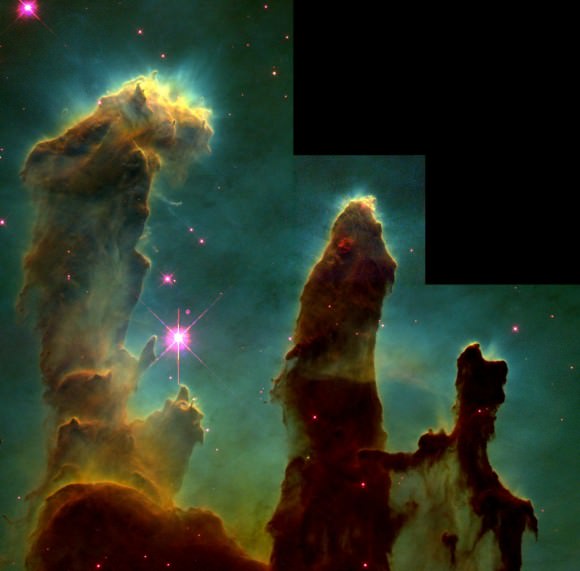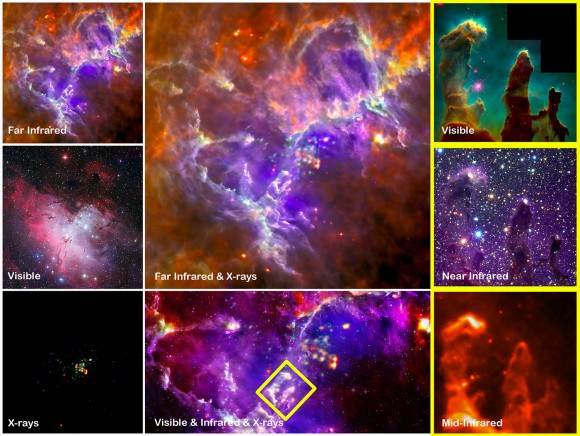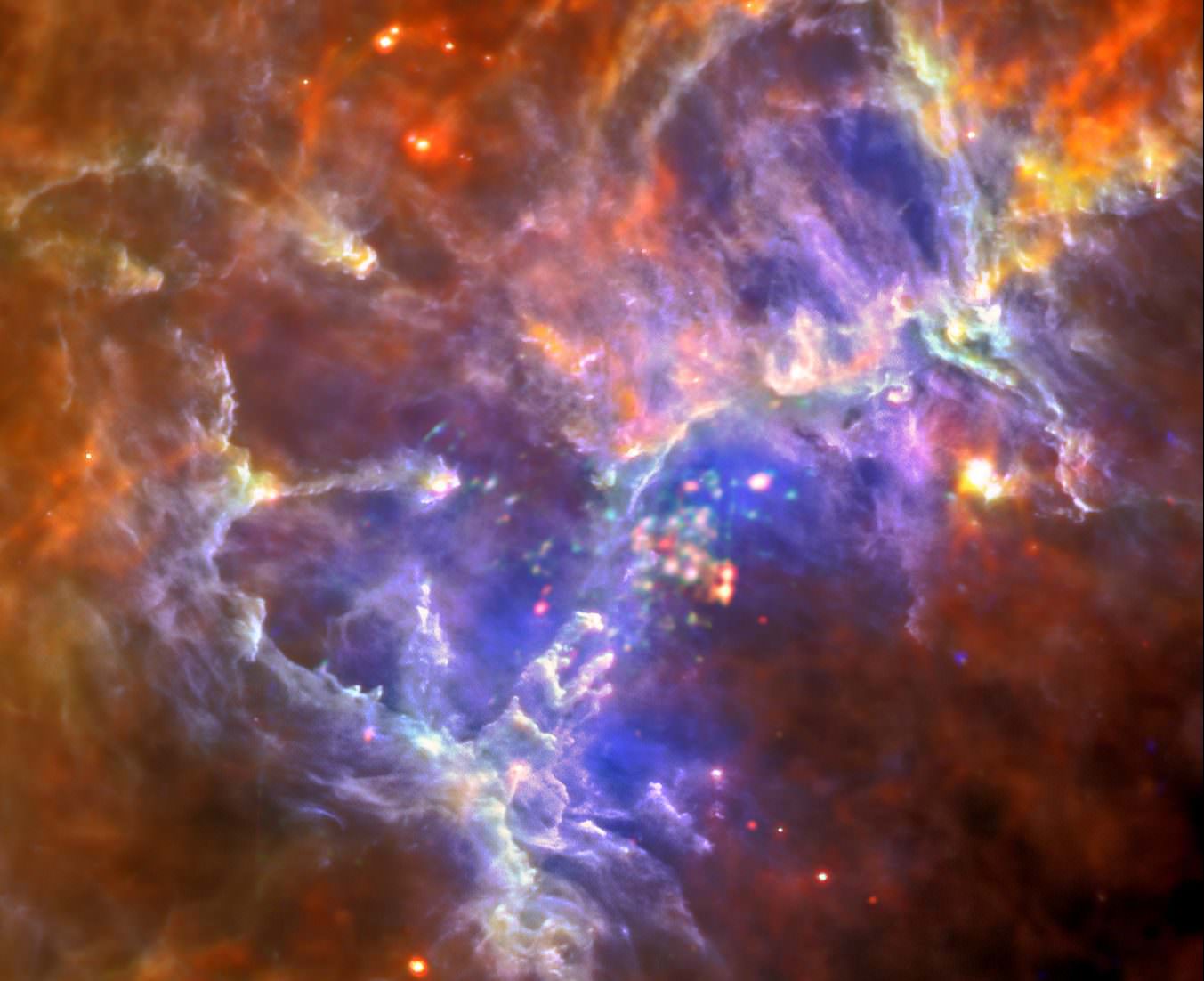[/caption]
Here’s a stunning new look deep inside the iconic “Pillars of Creation.” As opposed to the famous Hubble Space Telescope image (below) — which shows mainly the surface of the pillars of gas and dust — this composite image from ESA’s Herschel Space Observatory in far-infrared and XMM-Newton telescope in X-rays allows astronomers to peer inside the pillars and see more detail of the structures in this region. It shows how the hot young stars detected by the X-ray observations are carving out cavities, sculpting and interacting with the surrounding ultra-cool gas and dust.
But enjoy the view while you can. The sad part is that likely, this beautiful region has already been destroyed by a supernova 6,000 years ago. But because of the distance, we haven’t seen it happen yet.

The Eagle Nebula is 6,500 light-years away in the constellation of Serpens. It contains a young hot star cluster, NGC6611, which is visible with modest back-yard telescopes. This cluster is sculpting and illuminating the surrounding gas and dust, resulting in a huge hollowed-out cavity and pillars, each several light-years long.
The Hubble image hinted at new stars being born within the pillars, deep inside small clumps known as ‘evaporating gaseous globules’ or EGGs, but because of the obscuring dust, Hubble’s visible light picture was unable to see inside and prove that young stars were indeed forming.
The new image shows those hot young stars are responsible for carving the pillars.
The new image also uses data from near-infrared images from the European Southern Observatory’s (ESO’s) Very Large Telescope at Paranal, Chile, and visible-light data from its Max Planck Gesellschaft 2.2m diameter telescope at La Silla, Chile. All the individual images are below:

Earlier mid-infrared images from ESA’s Infrared Space Observatory and NASA’s Spitzer, and the new XMM-Newton data, have led astronomers to suspect that one of the massive, hot stars in NGC6611 may have exploded in a supernova 6,000 years ago, emitting a shockwave that destroyed the pillars. But we won’t see the destruction for several hundred years yet.
Source: ESA


I wonder who chooses the colors of these images. Is there a standard mapping for IR to Visible or UV to visible.
Anyways whoever did it has done a wonderful job!
How can the central stars be visible in an energetic wavelength like X-rays but be invisible by looking for their heat signature in infrared? Wouldn’t xray emitting stars necessarily be hot and therefore emitting in IR as well? Or does the IR become Xray at their temperatures?
The stars are very small compared to the dusty regions, and even though emittance in IR does increase with temperture, it only increases much more slowly than higher frequency radiations.
So basically, the ‘small’ star is overtaken by the huge vistas of dust, a dust that is heated by the high energy portion of the stars spectra.
LOL the Eagle Nebula looks like a butterfly in these wavelengths, complete with antenna’s